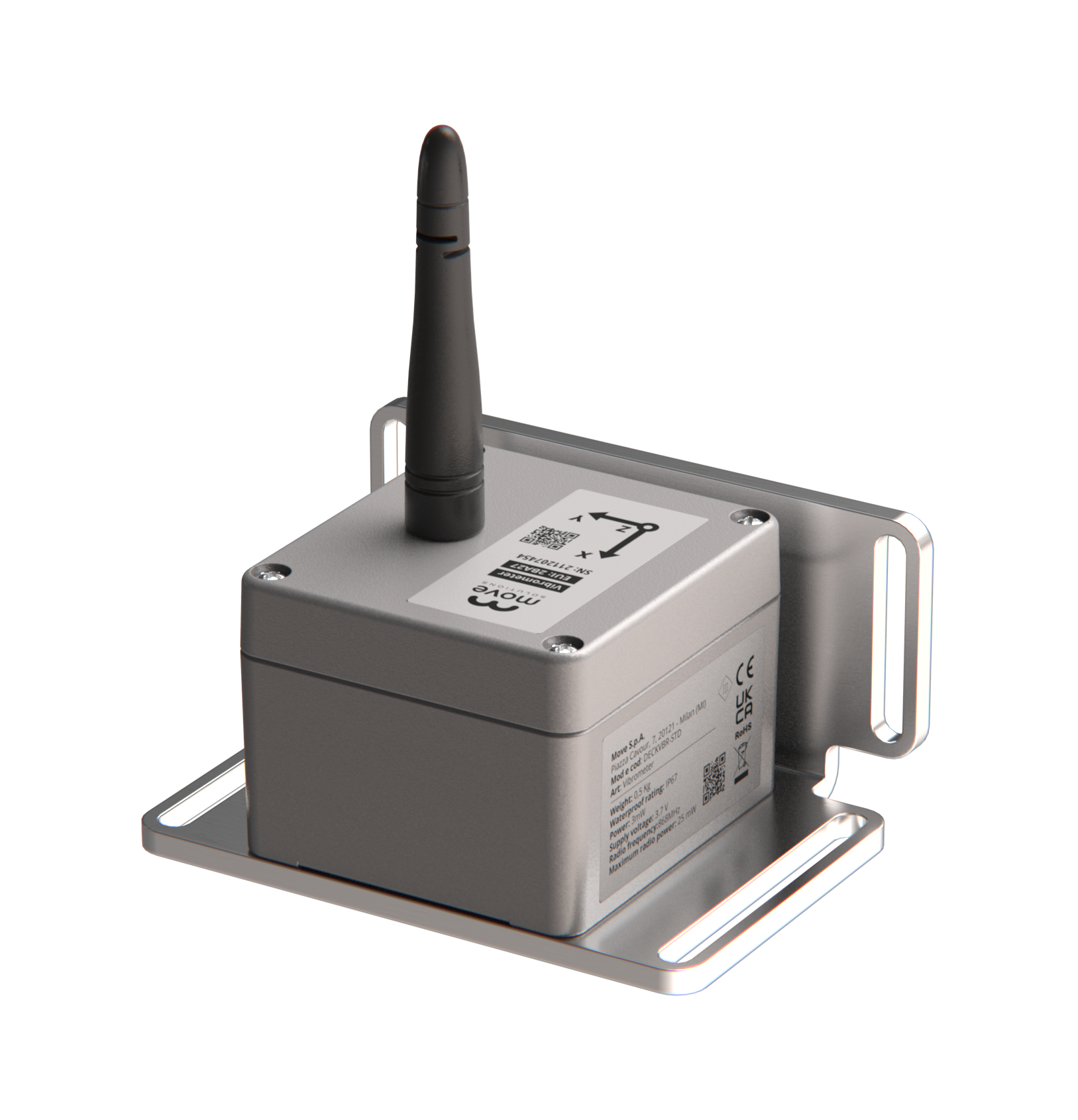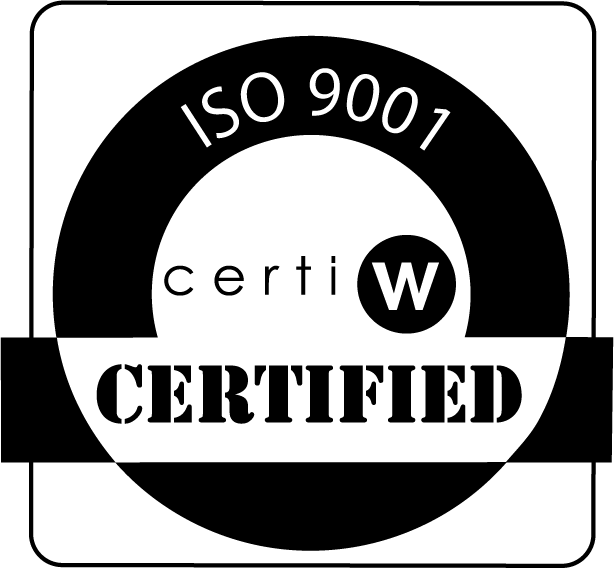Dynamic Displacement Sensor
The Dynamic Displacement Sensor measures structural movements when a displacement threshold is exceeded. It then captures a time window around the trigger and wirelessly transmits the data via LoRaWAN — ensuring efficient, event-based monitoring of dynamic structural behavior.
Everything you need, built In
All Move Solutions sensors share the same foundation: precision, reliability, and seamless integration.
Long-range, low-power data transmission ideal for remote and large-scale sites.
Multi-year operation with adjustable sampling and transmission settings.
Configure settings, calibrate sensors, and manage alarm thresholds, all in one platform.
Built for reliable use in harsh environments.
Dynamic motion. Measured directly.
Monitors structural displacement under dynamic conditions with millimetric precision—ideal for bridges, decks, and structural joints.
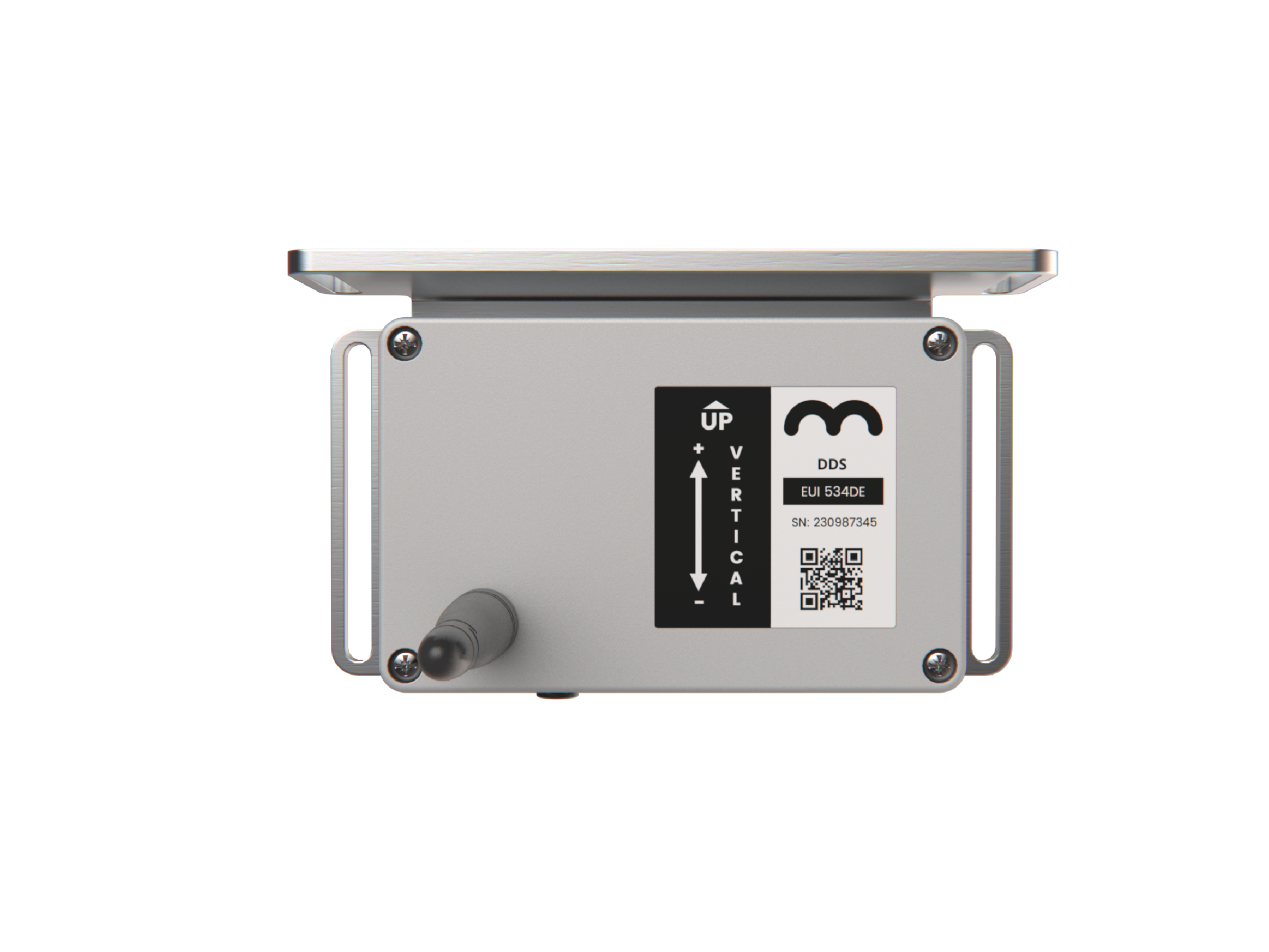
Dynamic displacement measurement
Measures relative motion along a single axis. Ideal for detecting structural motion caused by traffic, wind, or construction activity.
Event-based acquisition
Automatically triggers data capture when vibration exceeds a configured threshold. Each event includes 32 seconds of data: 12 seconds before and 20 after the trigger point.
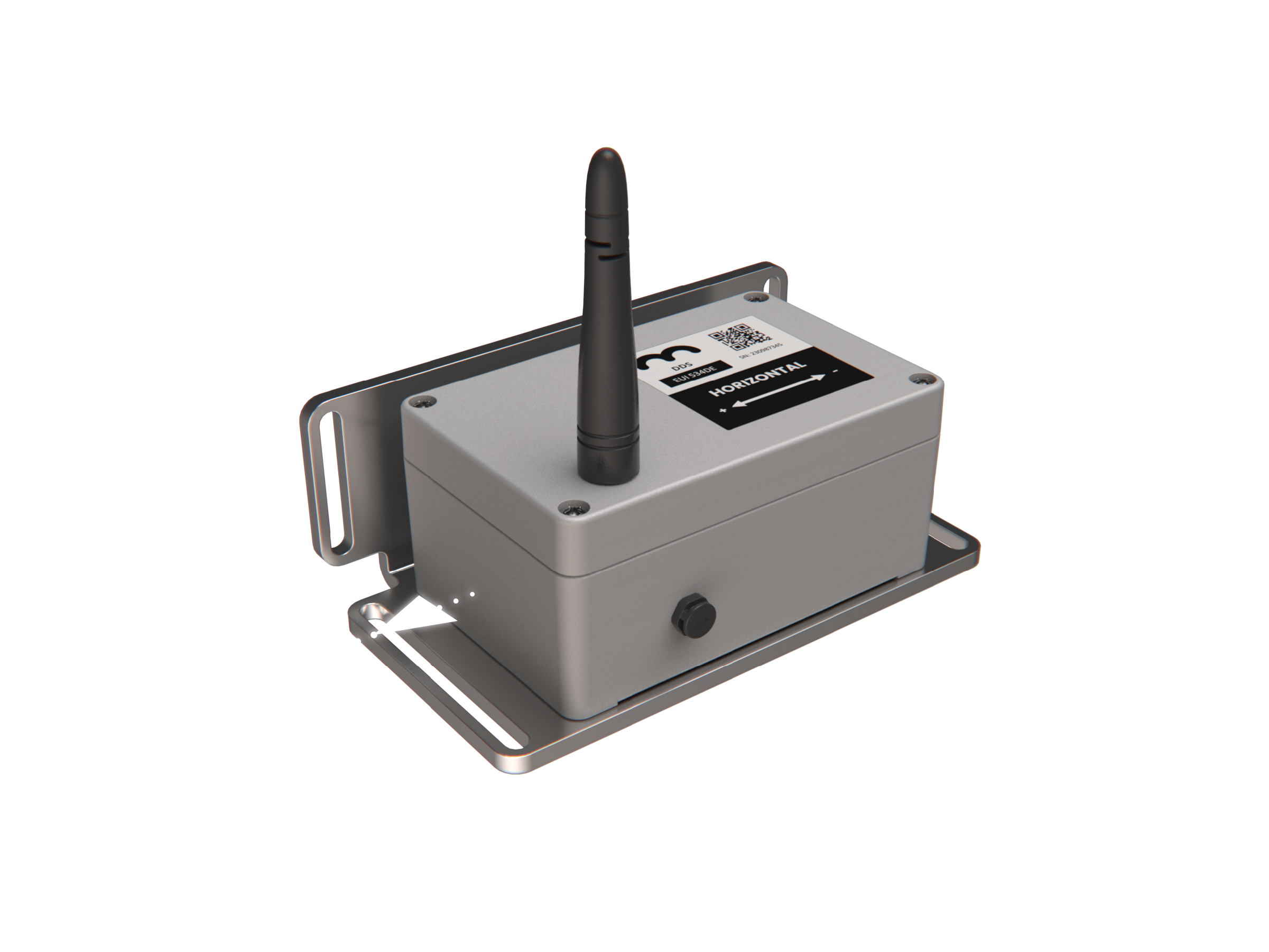
Frequency analysis
Performs frequency extraction in the 0.7–15 Hz range, allowing modal identification and correlation with vibrational phenomena.

Rugged and weatherproof design
Aluminum IP67-rated enclosure ensures long-term durability in harsh environmental conditions, suitable for permanent outdoor installations.
What this sensor measures
Dynamic displacement
Measures displacement of the structure in mm with high precision.
Frequency
Identifies the main frequency component of each recorded event, supporting structural modal analysis and trend tracking.
Temperature
Onboard temperature sensor records data during each acquisition to support data correction and correlation.
Available add-ons
Technical specifications
Displacement range
±1.5 mm or ±3 mm
Resolution
0.012 mm (@ ±1.5 mm), 0.024 mm (@ ±3 mm)
Sample rate
50 Hz
Event duration
32 seconds (1600 samples)
Frequency range
0.7 – 15 Hz
Battery
2x 3.6V LiSOCl₂ (JST PHR-4)
Wireless
LoRaWAN 868/915 MHz
IP67 | Size
165 × 97 × 145 mm | Weight: 1.7 kg
Operating temperature
–40°C to +80°C
For detailed information about
Dynamic Displacement Sensor
capabilities, check the download datasheet section.
Read your data, your way.

Use MyMove for real-time insights
Connect your sensors and devices to MyMove and access the full power of the platform:
real-time dashboards, alarms, automated PDF reporting, remote system control, and advanced tools for structural health monitoring.
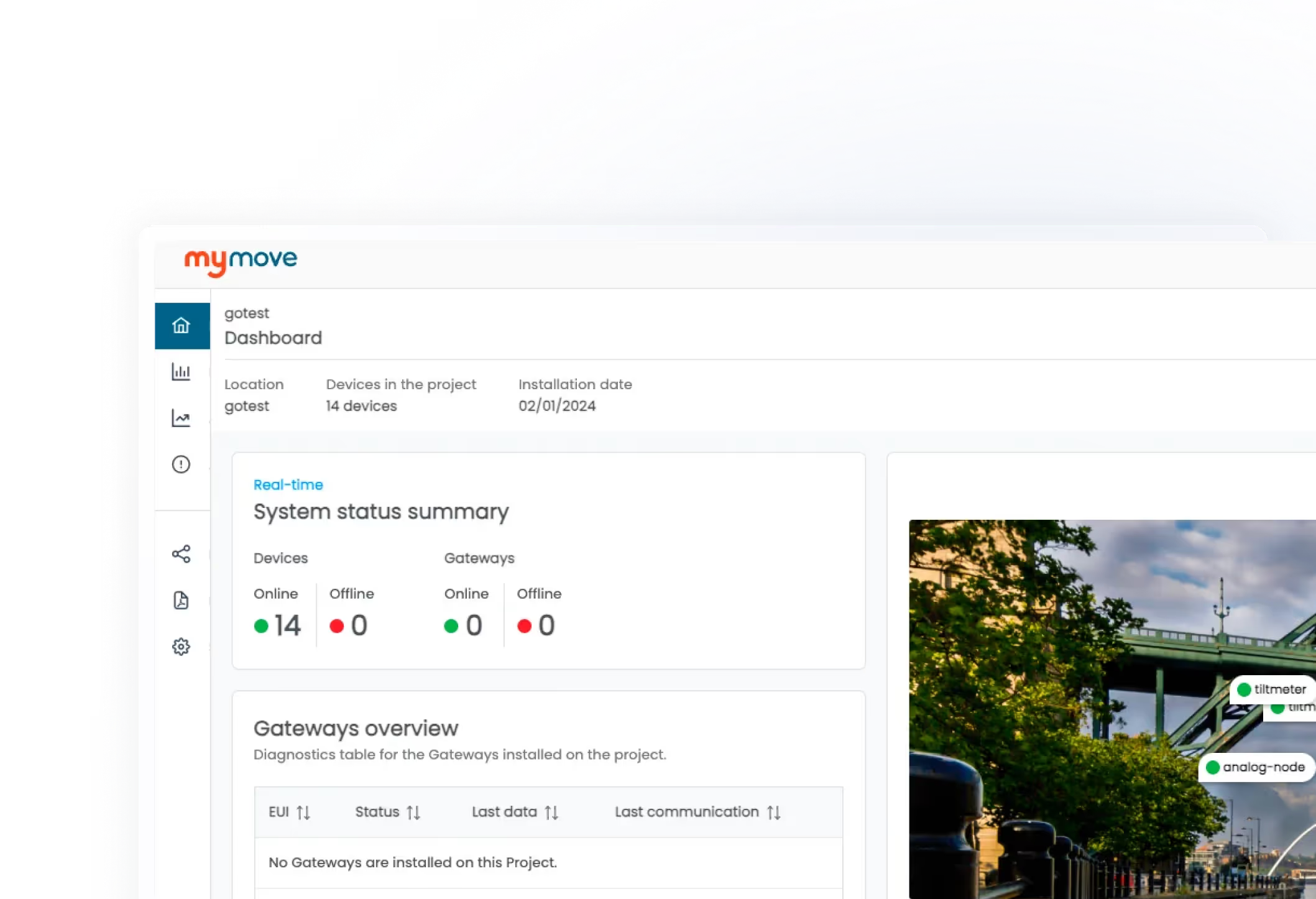
Integrate Move sensors via API
Use our API to access real-time and historical sensor data, configure devices remotely, and integrate everything into your SaaS, BIM model, or custom workflow.
Frequently asked questions
Find quick answers to common questions about our device and technology.
Didn’t find what you were looking for? Contact us—we’ll help you clarify any doubts.
The DDS (Dynamic Displacement Sensor) sensor measures uniaxial dynamic displacements, capturing oscillations relative to the structure’s resting position. It is available in two distinct models: vertical (DECK002-V), which measures displacements aligned with the gravitational axis, and horizontal (DECK002-H), which captures motion along the ground plane. Both versions are optimized to detect structural responses to dynamic events such as vehicular loading, wind, or seismic activity.
The sensor operates on a threshold-based trigger system. When structural displacement exceeds the configured threshold, an event is recorded. Each event includes 32 seconds of high-resolution data sampled at 50 Hz: 12 seconds before and 20 seconds after the trigger. Displacement values and temperature readings are both stored and transmitted to the cloud via LoRaWAN.
The sensor supports two selectable ranges: ±1.5 mm and ±3.0 mm. Corresponding resolutions are 0.012 mm and 0.024 mm, respectively. These can be configured through MyMove to match the precision and amplitude requirements of each specific use case.
Mounting orientation must match the sensor version. The vertical model must be installed with the “UP” arrow facing upward, while the horizontal model must respect specific lateral orientations to maintain measurement accuracy. It can be mounted to floors, walls, or ceilings using the supplied fixing plate and hardware.
With a typical configuration of 5 events per hour, battery life is estimated at around 2 years. However, frequent triggering, high structural vibration, or poor radio signal quality can significantly reduce autonomy. Optimal battery duration is achieved by calibrating the activation threshold appropriately and ensuring good line-of-sight connectivity to the nearest gateway.
Recommended sensors
Move Solutions offers high-precision, low-power sensors for structural, geotechnical, and environmental monitoring.
Request a tailored quote for your monitoring needs
Get a customized quotation based on your project specifications — from sensor selection to platform configuration and deployment support.
Request a quote now.svg)




